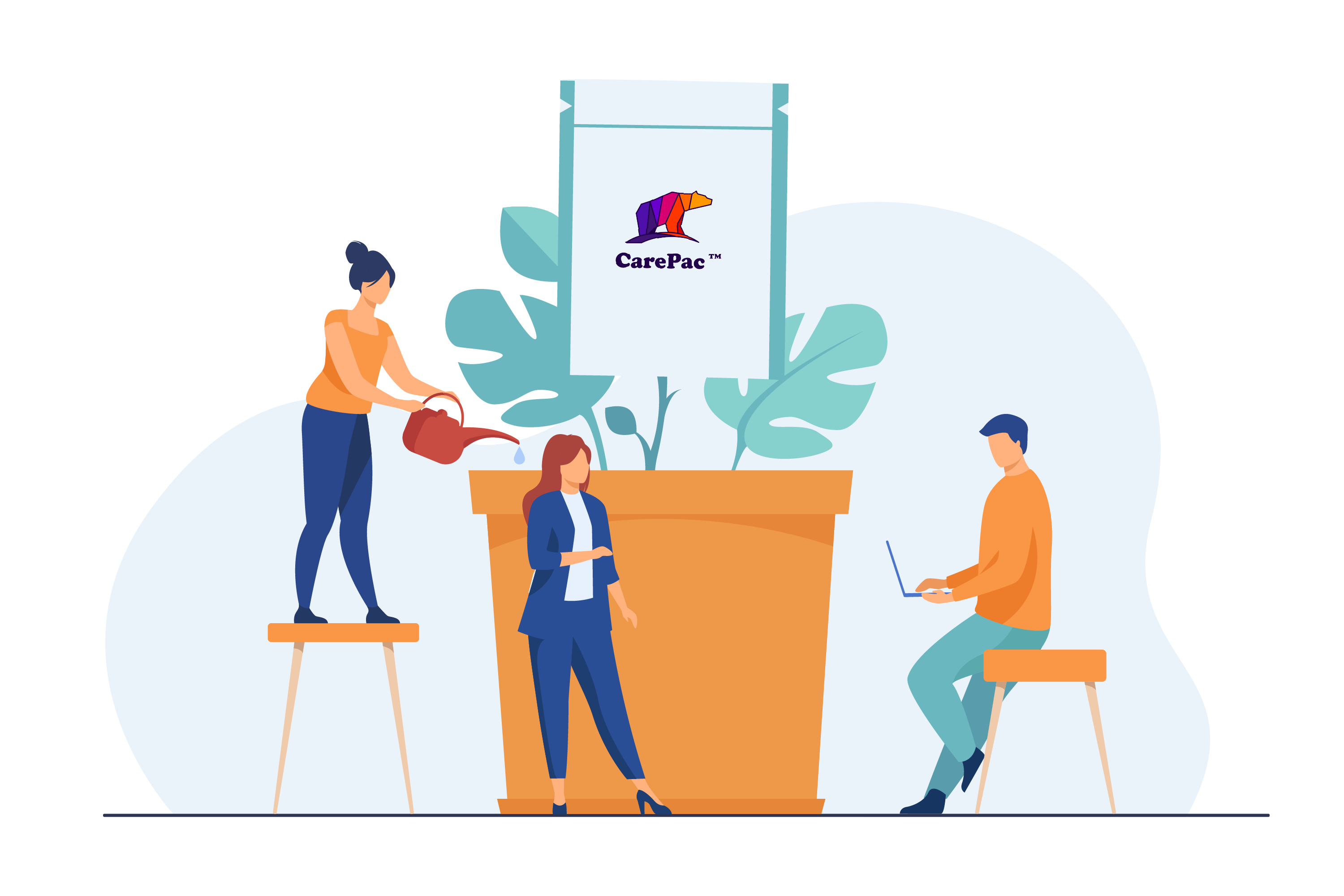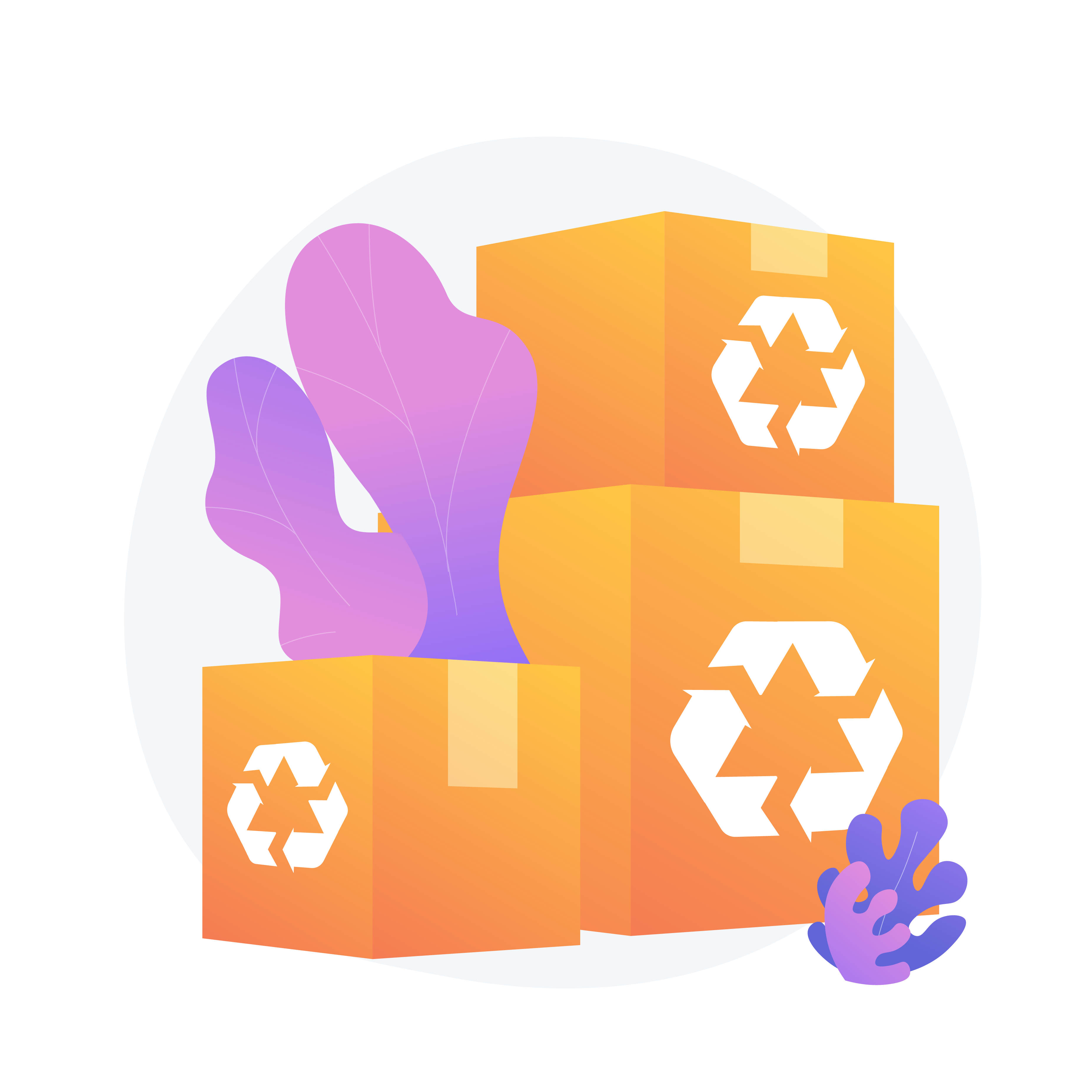No products in the cart.
The Best Sustainable Packaging
Material For Your Business


Managing packaging materials with a sustainable, circular economy in mind is key to addressing the enormous amount of packaging waste that hits landfills every year. A circular economy is designing a packaging strategy with zero waste in mind. Currently, around 91 percent of packaging waste is sent to landfills or ends up in the environment. In 2019, U.S. landfills released around 114.5 million metric carbon tons of carbon dioxide equivalent of methane into the atmosphere.
Methane is 25 more times potent than carbon dioxide in accelerating global warming. There is tremendous opportunity for businesses to reduce and/or redesign the current packaging industry by investing time and resources into supporting and utilizing sustainable materials. In this article we discuss what constitutes sustainable packaging, why sustainable packaging materials are important, and review the various environmentally friendly packaging options available in the market.
here...
The Best Eco Friendly Packaging Materials For Your Business


Before diving into the various sustainable packing options available, your business should actually make a point to also develop reduction and reuse goals. The most sustainable option is to simply use less materials, and many times businesses discover there are untapped opportunities to reduce packaging demand or to integrate innovative, sustainable ideas into packaging. Many of these untapped opportunities also reduce costs. An example would be to reuse cardboard boxes received from vendors to pack outgoing products, increasing the usefulness of the cardboard boxes, and reducing the need for your business to purchase additional cardboard.
Other ideas include reducing the size or quantity of packaging, reducing the thickness of packages, switching to bulk ordering for inbound packaging, and working with vendors to establish take-back programs and utilizing packaging that can be reused. It is important to note that not all of these strategies may also apply to your business or your products, and that they must be fully vetted to ensure they match your product needs. The most effective, comprehensive sustainable packaging strategy is to work to reduce and reuse resources while sourcing packing.
What is Considered Sustainable Packing Materials?
Sustainable packaging is a broad term that encompasses many different realms of sustainability.
These criteria are a suggested framework for understanding sustainable packaging, and it is important to note that many sustainable packaging materials will include some (but not all) of the above criteria. Implementing sustainable design techniques into packaging is designing packaging with the main end-goal of doing as little harm to environment as possible. There are many ways to achieve this, and design is one technique to include in your overall materials strategy. When looking to understand and design sustainable, flexible packaging, keep the Sustainability Packaging Coalition’s sustainable packaging principles in mind.
Why is Sustainably Design Packaging Important?
Investing in sustainable packaging helps reduce your company’s carbon footprint and shows a commitment to improving and protecting the planet. Whether it is candy, cosmetics, spices, coffee, food, or any other packaging, the quality of a packaging product is increasingly determined by the sustainability of the product. Additionally, investors and consumers alike are demanding that companies prove their commitment to meeting sustainability goals, pledges, and promises, through meaningful, measurable actions throughout the supply chain.
Companies are beginning to turn their backs to the continued use of plastic packaging materials (when possible), and to stay relevant and competitive within the realm of sustainability and ESG your business should consider doing the same. More than 70% of packaging customers do not mind paying a premium for sustainable packaging materials – check out additional tips on what to consider when assessing packaging for your business.
While this article provides a high-level overview of the different sustainable packaging materials available in the market, it is important to do your own due diligence to ensure you select the right materials for your business.
Examples of Sustainable Packaging
Rapid innovation and thoughtful design have led to a variety of packaging options that are much more eco-friendly than typical, single-use plastic materials. Some of the most sustainable packaging on the market to choose from includes plant-based, cardboard, recycled plastic, bioplastic, and organic fabric packaging. Each provides its own benefits and drawbacks (learn more about the pros and cons of eco-friendly packaging here), but all move you closer to packaging that supports a more circular economy while promoting the sustainability and brand of your business.
Plant-based Compostable Materials


The packaging market has dived into more creative materials sourced from plants, including cornstarch, mushroom, and seaweed packaging. Typically, these products are more likely to be eco-friendly because they may be compostable, or break-down much faster than traditional plastics. The production of these materials is also usually better for the environment, in that it leads to less greenhouse gas emissions released. Due to increased demand and a need to preserve the environment, many packaging companies (like us!) are developing a variety of recyclable, compostable and biodegradable packaging options for businesses to capitalize on.
Cornstarch
Cornstarch: is derived from corn and has similar properties to traditional plastic, making it a versatile, flexible packaging option that can be used for bottles, packing peanuts, insulation, or general molded forms. Many of the cornstarch packaging options will dissolve when placed under hot water, effectively eliminating any product going to the landfill. Cornstarch packaging is biodegradable and usually compostable but breaks down much faster in a composting facility than an at-home compost set up. The potential downsides of utilizing cornstarch are that it increases demand for corn itself and for the water used to grow corn. While corn is heavily subsidized by the U.S. and relatively inexpensive, most of the U.S. is facing a looming water shortage crisis in the near future. Additionally, there will be a need for increased agricultural land use to accommodate cornstarch production. Wheat starch is another, similar sustainable packaging material utilized in biodegradable packing peanuts for the same outcome – the ability to dissolve in water or be composted, resulting in zero waste.
Mushroom
Mushroom packaging is an affordable, up-and-coming plant packaging product that can hold smaller items and is used in lieu of Styrofoam. Like the name suggests, this packaging is made from mushrooms that bind together farming residue products. Since the farming residue would normally be discarded, this innovative sustainable packaging instead upcycles the material for continued use. Additionally, another positive for mushroom packaging is this residue was already created from other agricultural demands, whereas the corn for corn starch would be grown solely for packaging. This packaging material is 100% compostable (both in facilities or at home) and biodegradable, made of renewable materials without any petroleum products, and contributes to building a circular economy by helping eliminate waste sent to landfills. Mushroom packaging materials require low energy use for creation and generate low greenhouse gas emissions. Mushroom packaging is a great replacement for Styrofoam, and an excellent sustainable option to utilize where appropriate.
Seaweed
A team of innovative packaging designers were recently celebrated for prototyping seaweed as packaging material. Seaweed is a plentiful, renewable resource already being utilized in the food industry. Seaweed grows within 45 days, requires no fertilizer, can be immediately harvested, and does not require any chemical processing. The seaweed production process is much faster than growing corn, which requires land and fertilizer to grow. The yeast residue from seaweed production can be added to animal feed, meaning that seaweed packaging is a zero-waste product. There is currently a large amount of seaweed produced in Indonesia that is not being utilized, so adopting seaweed packaging not only supports a healthy planet, but also supports Indonesian farmers and takes advantage of an already-plentiful available resource. It is important to note that seaweed packaging is a relatively new design and is currently only sensible for smaller packaging needs. As technology advances alongside companies looking to green up their supply chain, advances in seaweed packaging will continue and seaweed may become a more mainstream, viable option for larger-scale product needs.
While none of the above packaging materials are a one-stop-shop to meeting all your sustainability goals, exploring how they can fit into your packaging needs is a great way to invest in sustainable packaging.
Recycled Cardboard/Paper Packaging Materials


Sustainability sourced, recycled cardboard and paper are some of the most recyclable materials on the market. Cardboard is the current industry standard in the ecommerce business, and is used to ship over 90% of products in the U.S. Work to source recycled cardboard and paper as packaging, as new cardboard and paper products emit a large amount of greenhouse gas emissions during the production process and require large amounts of energy and water to produce. Look for FSC-certified, recycled paper to ensure you are supporting sustainably managed forests and associated paper products. Cardboard and paper materials are where your sustainability packaging strategy comes in – implement reduction, reuse, recycle and redesign techniques to minimize environmental impacts when using cardboard or paper materials. Most cardboard and paper can also be composted at its end of life, which is a great way for these materials to avoid the landfill. Cardboard boxes can be recycled up to 25 times before reaching end of life, so develop a strategy to reuse these boxes and paper as much as possible, and to encourage your consumer base to do the same.
Recycled Plastic Materials - Post Consumer Recycled Plastics and Packaging


Hardy plastic is still one of the sturdiest materials available and is renowned for supporting heavy shipments or items, and can aid in keeping food fresh. When needing to use plastic materials, source 100% recycled plastic to increase the lifespan of the plastic and keep it out of the landfill as long as possible. Be mindful of the amount of plastic needed and use only the required amount of plastic necessary to keep the items safe from damage.
Bioplastic Materials
Another option is to utilize bioplastics, which were created to help phase out traditional plastics. The plant-based cornstarch and wheat packaging materials previously mentioned are typically bioplastics. Bioplastics are biodegradable plastics used in food packaging and mailers, and are usually made from corn starch, sugarcane, or cassava sugars. Polylactic acid (PLA) is the most common bioplastic in the market today. Bioplastics provide an alternative to regular plastic, which takes thousands of years to break down and is made from nonrenewable sources. While bioplastic production produces less greenhouse gas emissions than traditional plastic production, there are still downsides to bioplastics. These downsides include creating additional demand for energy, land, and water to produce bioplastics, which may lead to accelerated deforestation. Bioplastic material is a better not best option, and a great steppingstone for phasing out of traditional plastics toward more biodegradable, sustainable materials.
Organic Fabrics and Packaging
Where possible, evaluate replacing plastic bags with organic reusable bags. There are a variety of different organic fabrics available on the market now, including hemp, cotton, palm leaves, and tapioca fabrics. All of these fabrics have the ability to biodegrade much faster than plastic, and can also be reused by customers for other purposes (like a shopping or storage bag). If you use reusable bags, be sure and market to your customer base the reusability of the brands bags.
How to Choose Which Sustainable Packaging is Right for Your Business
Choosing the most appropriate sustainable packing material for your business comes down to what your brands needs and what you are looking to prioritize. Do you need a more flexible material that can be used in a variety of ways? Cornstarch packaging could be right for you. Looking for a zero waste, Styrofoam substitute? Mushroom packaging is the way to go. There is tremendous opportunity to create more sustainable packaging operations (and reduce costs) just by conducting an audit of current packaging materials and methods, and evaluating opportunities to reduce, reuse, or redesign your system. While achieving a circular economy with zero waste is a difficult task in the packaging industry, amazing progress has been made toward reducing and eliminating unnecessary packaging waste. We encourage you to source a variety of the sustainable packaging options above, and to mix and match to meet your individual business needs.
By Madeline Hinchliffe (Linked-in)
About the Author
Madeline is a sustainability specialist who focuses on the integration of sustainable initiatives and programs. Currently Ms. Hinchliffe is a energy Analyst at CBRE
Tags

